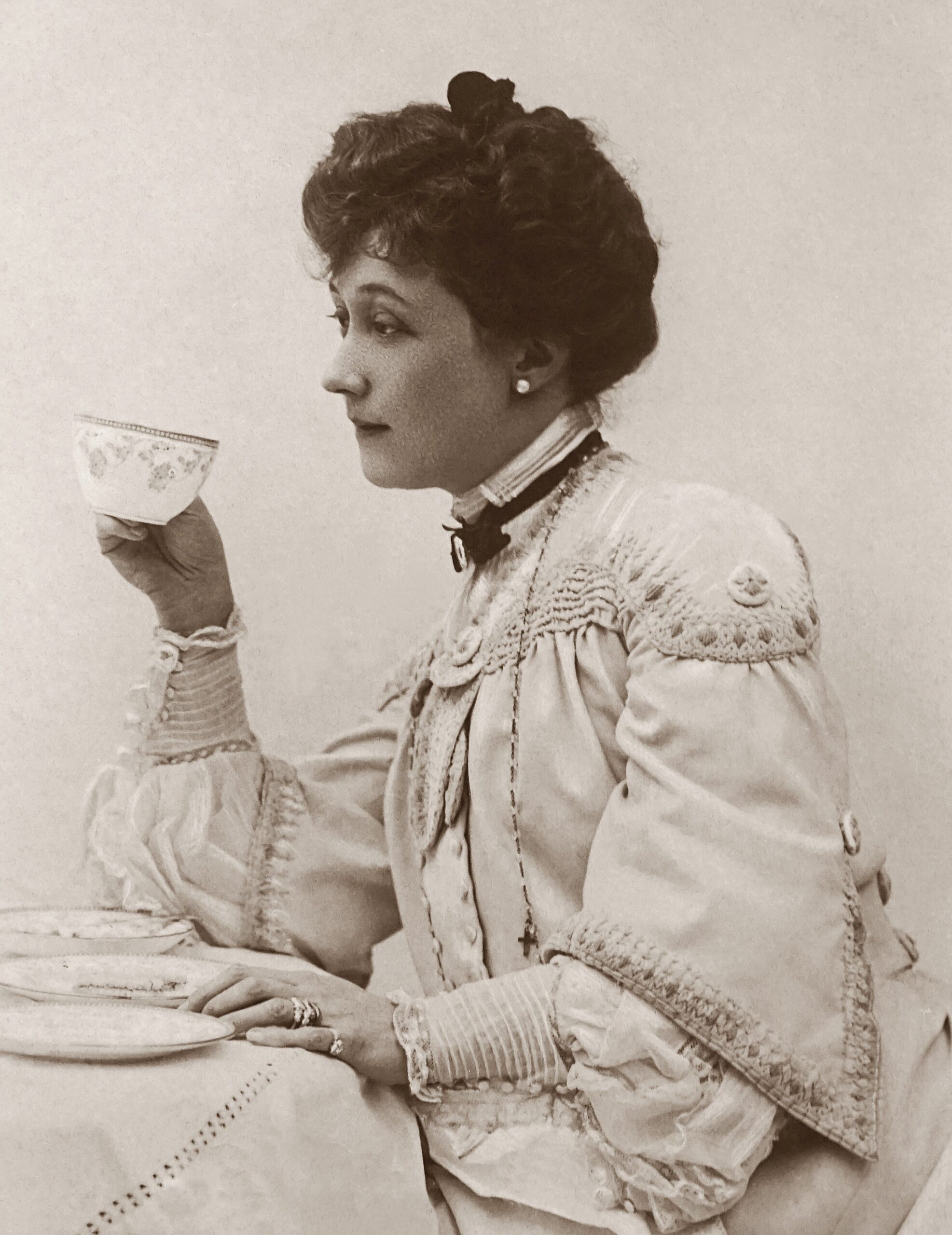When one thinks of Spiritualism, often mediums and seances and well-executed sleight of hand tricks come to mind. It’s easy to throw everything under the same umbrella as psychic hotlines and crystal balls, but where did the Spiritualist movement begin, and why were women so often seen at the forefront of it?
It began in upstate New York, already a religious hotbed with the advent of Mormonism and also the activities of the Second Great Awakening. And it began with three sisters, the Fox sisters, who claimed that on March 31, 1848, they had made contact with a spirit.
This is where the practice of “rapping” has its start, where one would ask questions to the air and hope for a response of knocks against the tabletop standing in for speech, like a ghostly Morse Code. The Fox sisters were quickly taken in by the Quakers, and from there the movement spread, other young women stepping forward with claims of having been visited by spirits, healed by spirits, receiving vital messages from spirits. And the women were often young, often lovely, and so able to draw a crowd.
Spiritualism appealed to the upper and middle classes, and especially those who had recently lost a loved one. And with the Civil War breaking out only thirteen years after the Fox sisters responded to those first knocks, thousands and thousands of families watched their sons march to battle and never come home again. The search for life after death began in earnest, beyond Christianity’s teachings and promises of eternal life for the soul. Seances soon became the order of the day, despite their being likened to the practices of witchcraft (and even being blamed for the Civil War on at least one occasion) Seances were even conducted in the White House during the years of Abraham Lincoln, and Spiritualism was often embraced by those who shunned organized religion.
Which is not surprising that the two didn’t go hand in hand, as both Christians and Jews adhered to the verse in Leviticus 20:6 that states: “I will set my face against the person who turns to mediums and spiritists to prostitute himself by following them, and I will cut him off from his people.”
Well, then.
But many seances or “sittings” at the time had overtones of attending a small, intimate church service. The attendees would often pray, asking God for guidance in their search for knowledge and attempts to communicate with the spirits who were believed to exist on a higher plane than mere humans. Christian hymns were sung, verses from the Bible were quoted (though not the one from Leviticus, I’m sure.) Everything was meant to have the feel of something like a Bible study or meeting at someone’s house. Nothing one would usually associate with a movement later exposed as being riddled with fraud and chicanery.
Which isn’t surprising, really. During a time when hundreds of thousands of men lost their lives to a hideous war (and Spiritualism would see another surge in popularity after World War I took the lives of over seventeen million people), the scientific community was buzzing with the findings of Robert Chambers, who published Vestiges of the Natural History of Creation in 1844, and Charles Darwin, who published his Origin of Species in 1859.
And along with these things, slavery was on its way to being abolished in the United States (and had already been abolished in England in 1833), and with the move into the Industrial Age which allowed more women into the workforce, women began to fight for the right to vote and for equal pay. So during all of this upheaval as the western world was thrust into the modern age, as people became disillusioned with the organized religion of the nineteenth century, it’s not surprising that some people began the search for something that would give them proof of life after death, that there was still something more for them beyond this existence, and that not all of life’s mysteries had been solved by the scientists and industrialists of the age.
And it was women who often stood at the head of the Spiritualist movement (though many men became famous mediums as well). Women, who were believed to be more sensitive to the messages being sent from the other side of the veil. Though this perceived weakness in their sex allowed many of them to become adept businesswomen and performers, touring across the United States and Europe to sold-out crowds. That is, until many of their lauded tricks and materializations were discovered to be nothing more than animal livers and old sheets.
Spiritualism still exists today, mostly stripped down of its hallmarks of levitating tables and automatic writing and ectoplasmic figures. But for many years it drew interest from people like Sir Arthur Conan Doyle, Charles Dickens, and Pierre and Marie Curie, and even Queen Victoria was rumored to use the services of a medium to contact her beloved Prince Albert and hear his messages to her from beyond the grave.
In writing The Half Killed, I researched a religious movement that traced its origins to three sisters in upstate New York and followed its spread across the continents. Women sometimes benefitted greatly from the Spiritualist movement, suddenly finding themselves in places of power and recognition, their voices not only heard but revered. Despite the steady disintegration of the movement in later years and the skeptical eye laid on it as the nineteenth century wound to a close, it signalled a change in how women were regarded in matters of religion, science, and industry. Changes that are still rippling through the ether to this day.


